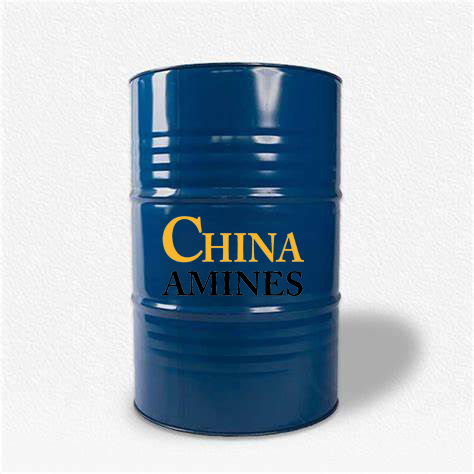Your Questions and Comments
Your sales and customer service desk partners within China Amines Co will continue to serve you. You can also contact us via our headquarter office-
Email:info@chinaamines.com
China Amines Co
Product Profile
Diethylene Glycol Monohexyl Ether
CAS No.: 112-59-4
Synonyms / IUPAC Name: Diethylene glycol monohexyl ether; 2-(2-hexyloxyethoxy)ethanol
Molecular Formula: C₁₀H₂₂O₃
Molecular Weight: ~190.28 g/mol
Appearance: Colourless, mobile liquid with slight odour.
Physicochemical Properties (Typical)
- Boiling Point: ~259.1 °C
- Melting Point: ~–33.3 °C
- Density (Relative to water): ~0.935 at ~20 °C
- Solubility in Water: ~1.7 g/100 mL at 20 °C (very low solubility)
- Flash Point: ~140.6 °C (closed cup)
- Log P (octanol/water): ~1.70
Purity & Quality Standards
- Typical Commercial Purity: ≥98.0% (GC)
- Appearance: Clear liquid free from visible particulates or haze.
- Specification Indicators: To meet industrial solvent grade, acid value, moisture content, and residual solvent levels should be controlled (specific values per internal/customer standard).
- Storage Recommendation: Store in sealed containers, in a cool (<30 °C), dry, well-ventilated area, protected from direct sunlight and ignition sources.
Applications / Uses
- Used as a high-boiling solvent and coalescent agent in coatings, paints, and inks due to its good solvency and leveling performance.
- Employed in cleaning and degreasing formulations, especially where controlled evaporation is required.
- Utilised in the formulation of polymers and resins, as well as in specialty chemical processes where ether-alcohol functionality provides versatility.
- Suitable as a component in industrial processes requiring low volatility, good film formation, and compatibility with organic solvents.
Safety & Handling
- Flammability: Combustible liquid; vapour may form explosive mixtures with air.
- Health Hazards:
- Inhalation: May cause respiratory tract irritation or dizziness at high concentrations.
- Skin Contact: Prolonged or repeated contact may lead to irritation.
- Eye Contact: May cause serious eye irritation.
- Precautions:
- Use only in well-ventilated areas.
- Wear protective gloves, goggles, and appropriate protective clothing.
- Avoid heat, sparks, open flames, and other ignition sources.
- Ensure containers are properly grounded/bonded during transfer to minimize static risk.
- Reactivity / Incompatibilities: Avoid strong oxidising agents; material may form peroxides on prolonged exposure to air/oxygen.
Packaging & Storage
- Packaging: Supplied in sealed metal drums or IBC containers compatible with high-boiling solvents.
- Storage Conditions: Store in cool (<30 °C), dry, well-ventilated area, away from direct sunlight and ignition sources; keep containers tightly closed when not in use.
- Shelf Life: Stable under recommended storage conditions; inspect container integrity and appearance before long-term use.


